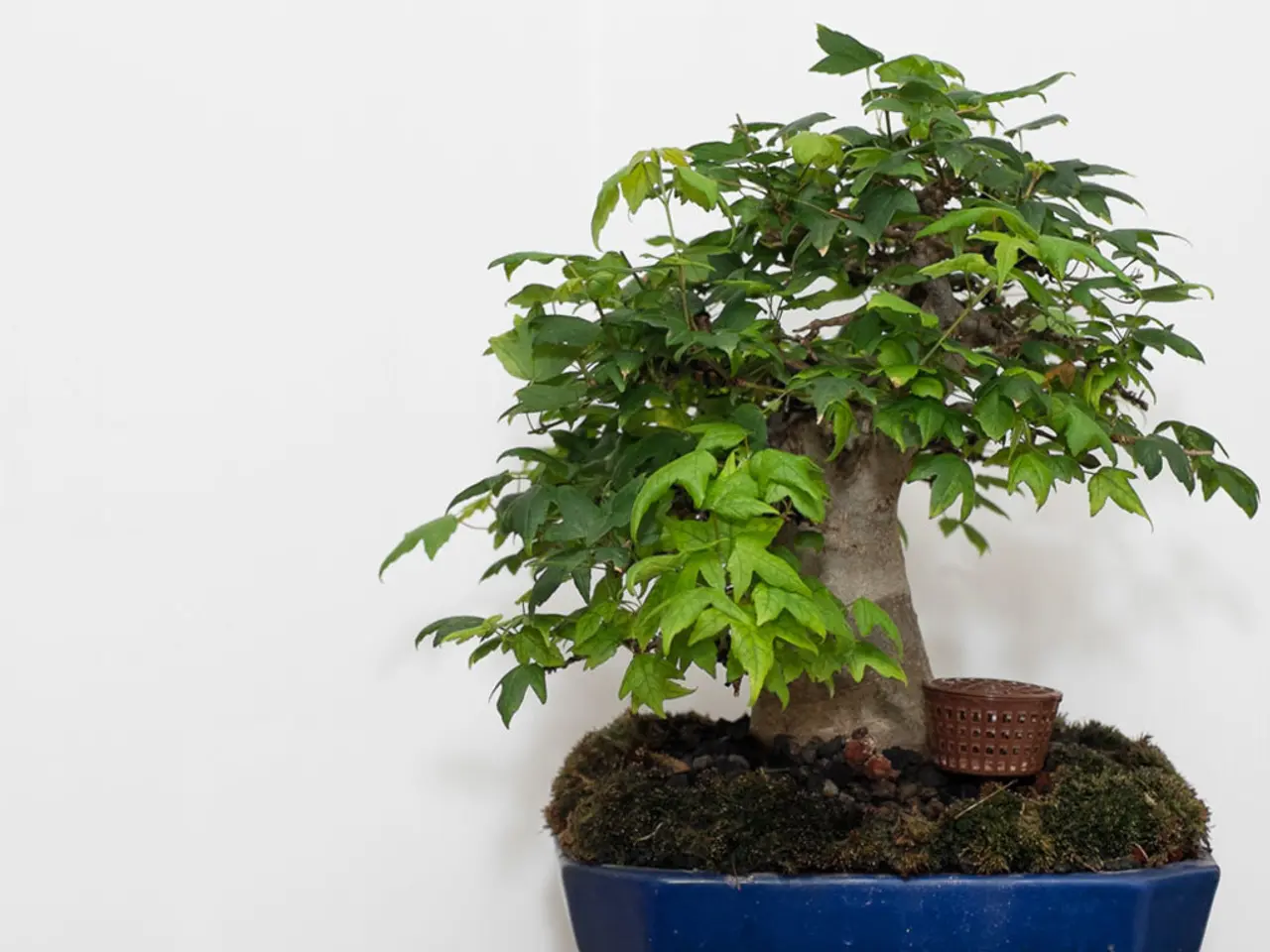Celebrating the Power and Poise of Tall, Controlled Bonsai Trees
The Formal Upright Bonsai, also known as Chokkan style, is a timeless masterpiece that embodies stability, strength, and balance. This style, which symbolizes an idealized mature tree standing firmly in nature, is renowned for its elegance and refinement.
Key characteristics and techniques for creating a Formal Upright Bonsai include a single, strong, and straight trunk tapering naturally, branches arranged symmetrically and progressively smaller towards the top, and careful pruning and wiring to maintain the structure's vertical form. Establishing a visible, enlarged trunk base (nebari) for stability and regular repotting to sustain health while controlling size are also crucial.
Ideal species for Formal Upright Bonsai typically have strong trunk development and can hold branch placement well. Common choices include the Japanese Black Pine (Pinus thunbergii), various species of Junipers such as Juniperus procumbens, olive trees, Cryptomeria, and more. These species respond well to shaping techniques like wiring and pruning required for the formal upright style, allowing for a clean, stately aesthetic.
Growing a Formal Upright Bonsai indoors requires sufficient light, controlled temperatures, and precise watering schedules. Primary branches emerge from the trunk at a 45-degree angle, providing a sense of movement and flow. Ramification enhances the tree's density and visual interest.
To cultivate strength and resilience in a Formal Upright Bonsai, consider proper watering, balanced fertilization, regular pruning, protection from pests and diseases, and maintaining good hygiene. Monitor for signs of infestation and use organic pest control methods and fungicides as needed.
Insufficient foliage can be addressed by selecting species with dense foliage and adopting gentle pruning techniques. Secondary branches add depth and texture, while tertiary branches create a soft, feathery appearance. Weak branch structure can be solved by selective pruning and wiring to promote strong, well-placed branches. Inconsistent trunk taper can be addressed by regular pruning and wiring to maintain a consistent taper.
The strategic placement of pot and stone complements the tree's natural beauty, while the gentle curves of the branches, the subtle twists of the trunk, and the delicate dance of light and shadow all conspire to create an atmosphere of tranquility and reverence. The Formal Upright Bonsai's silhouette is characterized by elegance and refinement, and its subtle nuances elevate this style to an art form.
It's important to note that there is no definitive minimum age for a tree to be considered a bonsai. The art of bonsai cultivation can be applied to trees of various ages and species. It requires patience and dedication, but the reward is a living, breathing testament to the intersection of nature and human creativity. In the art of Formal Upright, we are reminded of the beauty that arises from this profound sense of connection.
Home gardening, with a focus on bonsai, can offer a serene lifestyle by cultivating a Formal Upright Bonsai at home. This style, typically chosen from species like Japanese Black Pine, Junipers, olive trees, Cryptomeria, and more, not only improves the home-and-garden's aesthetic but also epitomizes an interplay of nature and artistry.





